Background:
You don’t need to spend too much time in discussions with other enthusiasts to come across a question about whether a FMIC or stock location IC (SMIC) is better.
More often than not I find somebody responding that stock location ICs have been “proven” to be better and no proof is offered.
It doesn’t help that vendors make unsubstantiated claims that mislead consumers.

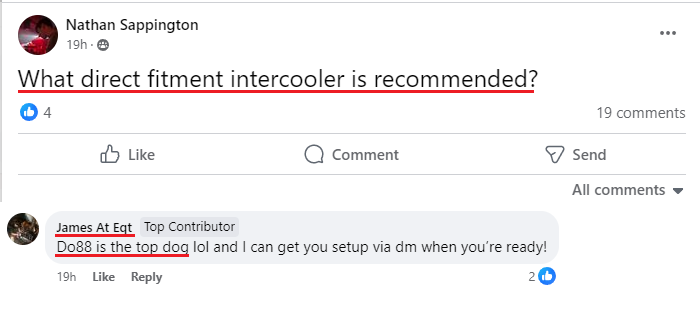
Having used my fair share of both types I have a few data logs to draw evidence from.
Comparison:
In this post a comparison of data produced using the do88 stock location intercooler and Baun Performance/Vibrant front mount intercooler is made.
The first series of comparisons are made using a Mk7 GTI equipped with an IS38 turbocharger and an IS20 turbocharger.
Data for the do88 intercooler was recorded using the IS38 turbocharger, and data for the Baun/Vibrnat FMIC was recorded using both stock turbochargers.
Data is recorded during multiple third-gear full-throttle pulls from approximately 2000 RPM to 6500 RPM.
With the do88 intercooler, 7 pulls were made. With the Baun/Vibrant FMIC there were 10 pulls made with the IS20 turbocharger and 24 pulls made with the IS38 turbocharger.
An additional comparison is made using track data from an IS20/do88 equipped GTI and an IS38/Baun FMIC-equipped Golf R.
Test Results:
The first chart shows the boost pressure at the compressor outlet.
The IS20 generates boost pressure faster than the IS38 and then drops below the level of the IS38 after approximately 4300 RPM.
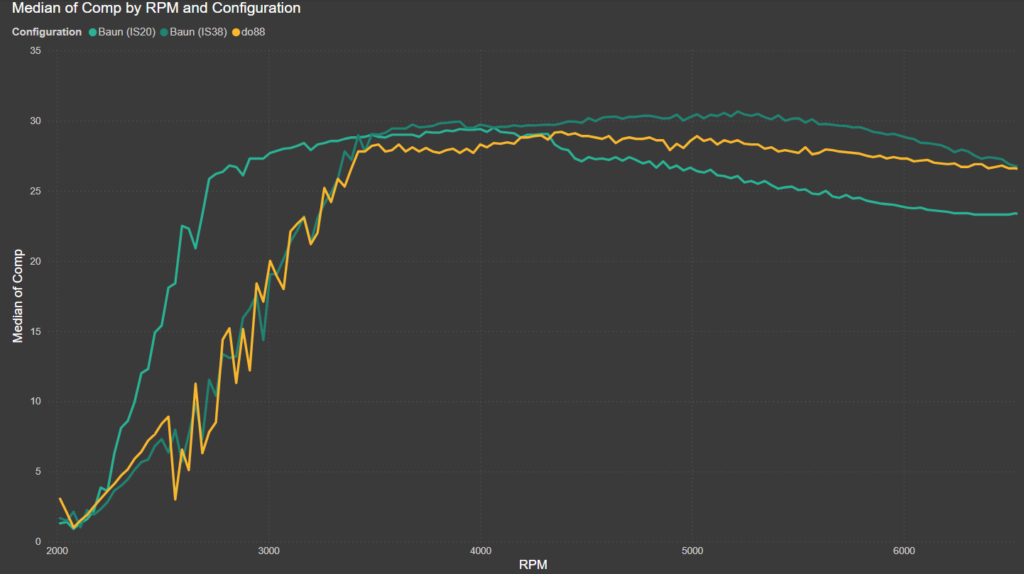
The increased pressure at the IS38 compressor outlet using the Baun/Vibrnat FMIC is reflected in the pressure drop curves where the IS38/Baun combination has a higher pressure drop than the IS20/Baun combination and do88 IC.
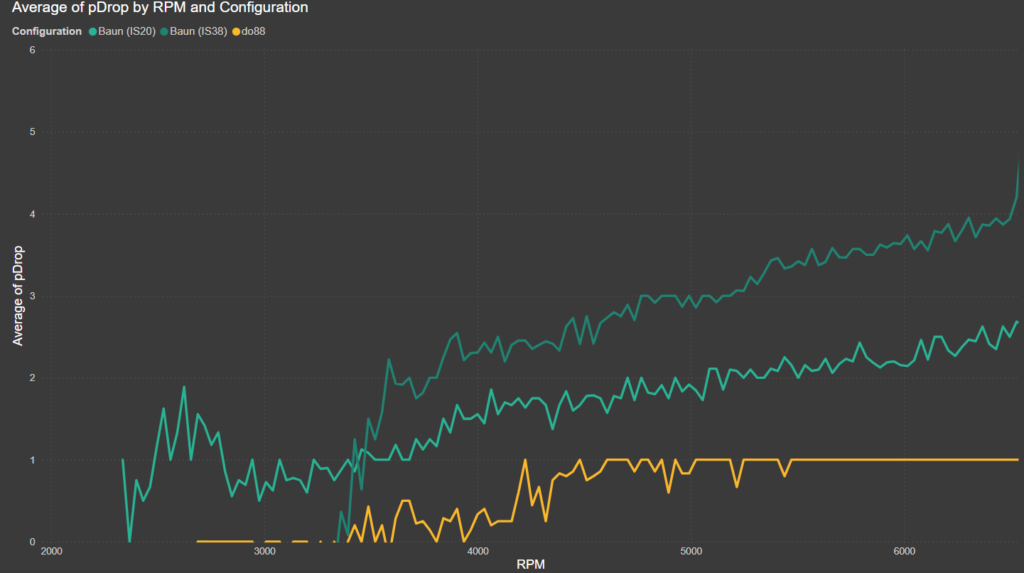
Both datasets using the Baun/FMIC have a higher compressor outlet air temperature.
This higher temperature is not solely a product of higher operating pressure since the IS20/Baun data has a similar temperature to the IS38/Baun but operates at lower boost pressure.
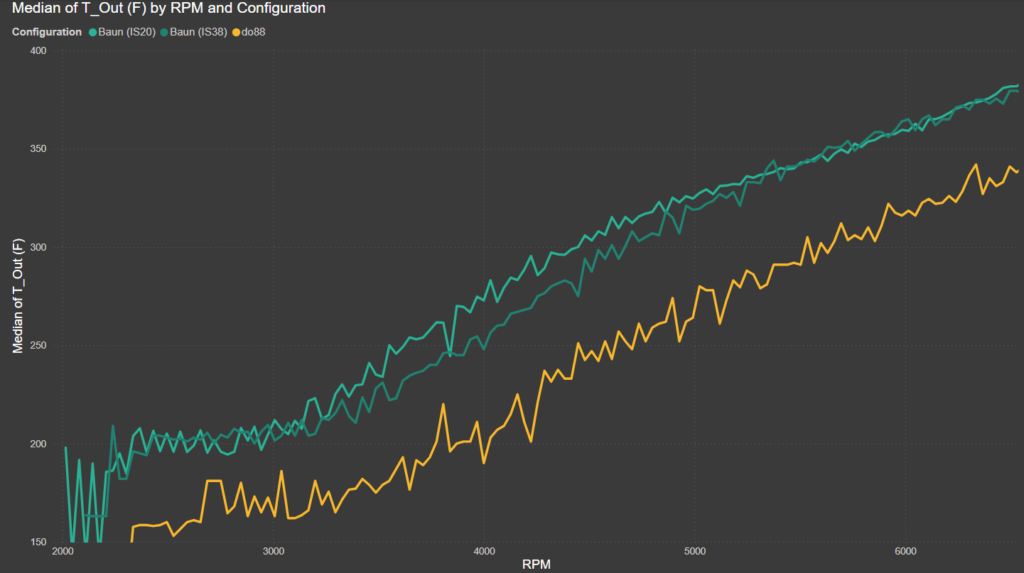
Regardless of the cause, the Baun FMIC is being presented with a higher charge air temperature than the do88 IC.
The next chart shows the rate that the intercoolers heat soak on the way to reaching a steady state temperature. Each data point represents the difference between the IAT and outside temperature at 6000 RPM.
The do88 IC shows the fastest rate of heat soak and all three data sets reach a steady state around 20 degrees Fahrenheit above the ambient air temperature.
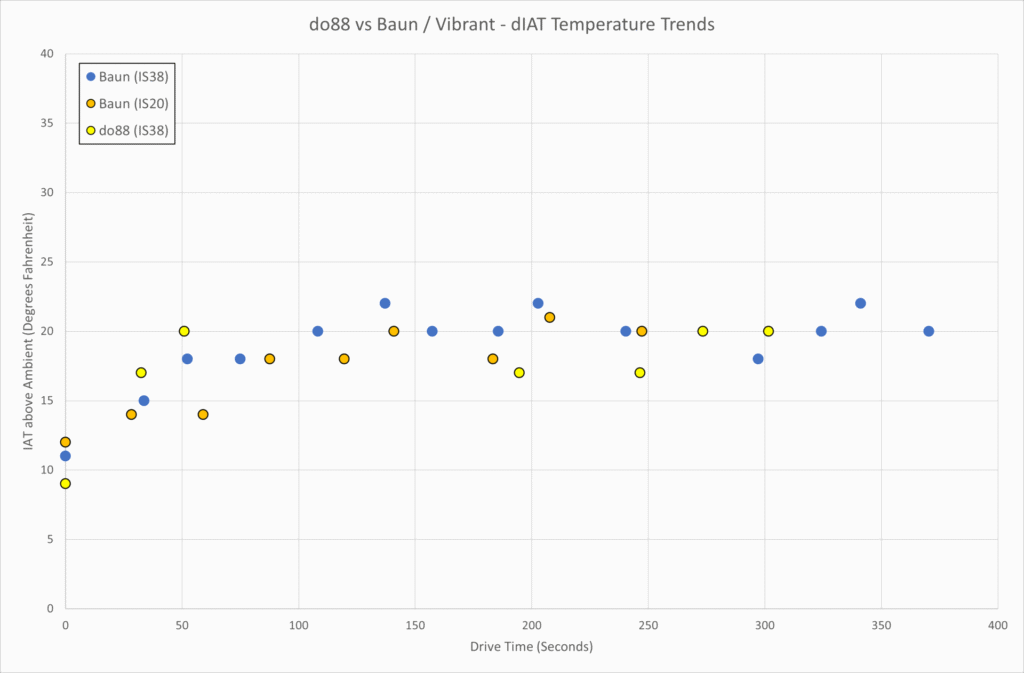
The next chart shows the average delta IAT (IAT above ambient) during the series of pulls.
All three setups have a similar delta IAT with differences in low single digits.

In the next chart, the intercooler efficiency is compared. This value is determined by comparing the turbocharger compressor outlet temperature with the IAT and the ambient air temperature. (T_Out – IAT) / (T_Out – OAT)
Once again the intercoolers have similar performance with a difference in efficiency of less than 5% for most of the pull.
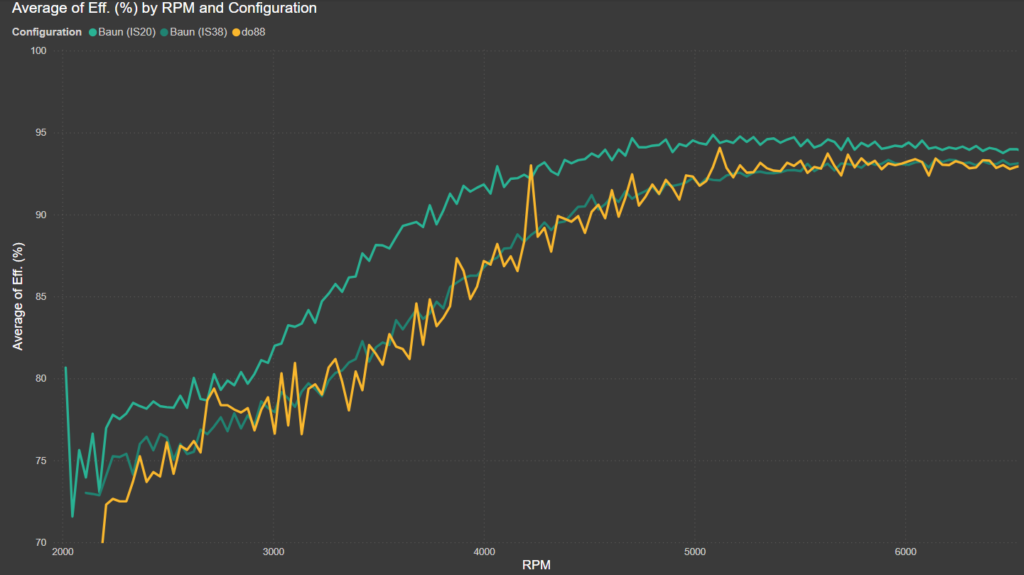
In the next chart, Track data is compared over 8 minutes.
The IAT above the ambient air temperature is shown for both a do88 and Baun/Vibrant IC-equipped cars.

Minor insignificant differences are observed.
Note: No attempt is being made to control for the multiple factors that different cars at different locations under different conditions introduce.
The purpose of this comparison is to evaluate if there are significant enough differences between how well the products perform to justify trying to account for factors other than the intercooler being used. This does not appear to be necessary.
Conclusions:
A do88 stock location intercooler was compared with a Baun Performance/Vibrant FMIC to evaluate differences in performance.
Both intercoolers performed similarly on vehicles equipped with an IS20 and IS38 turbocharger.
A statement made about the do88 intercooler from Equilibrium Tuning:
Do88 offers the best cooling capacity on the market…
Dave At EQT
is not supported by the evidence recorded using these vehicles.

For drivers with an IS20 or IS38 turbocharger, operating on the street, there is negligible difference in the cooling performance between the do88 stock mount intercooler and the Baun/Vibrant front-mounted intercooler.
A limited comparison of track data also shows a negligible difference in cooling performance between these two intercoolers.
Consumers operating their vehicles under conditions similar to those described in this test can apply criteria other than cooling performance when selecting between these intercoolers for their Mk7.

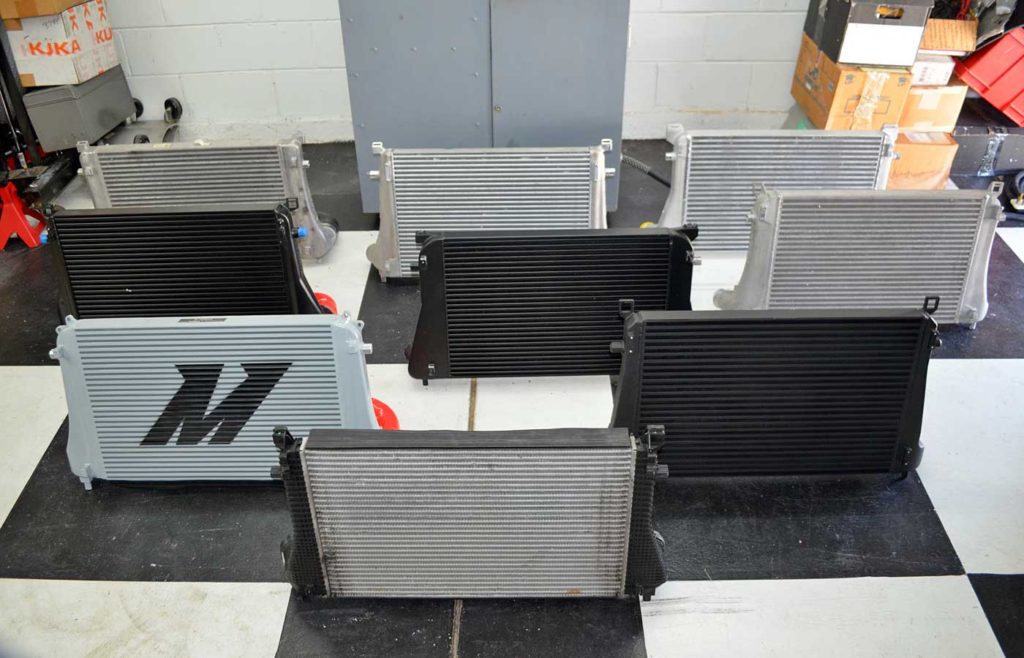
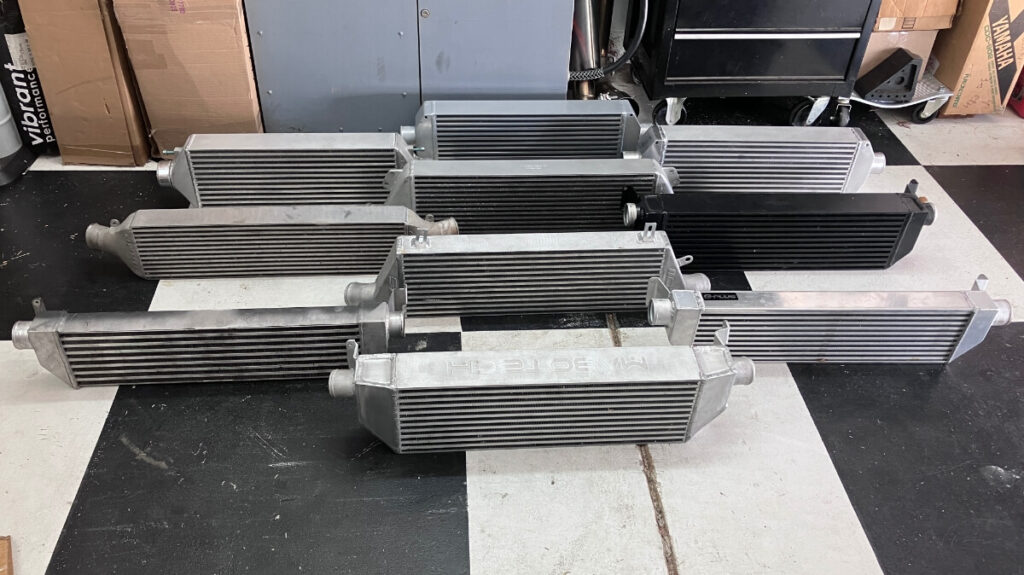
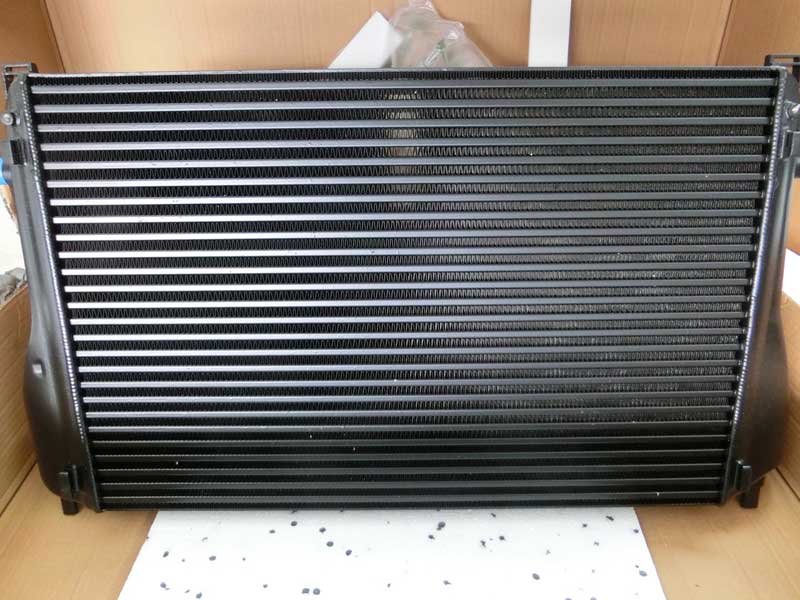

I have a DO88 myself and if I were buying again I’d buy an APR unit. Better fit and finish, with just the same, possibly better performance (though it’s really splitting hairs either way) for my needs.
I also prefer the APR IC for my use.
“there is negligible difference in the cooling performance between the do88 stock mount intercooler and the Baun/Vibrant front-mounted intercooler”
But one has 4 times higher pressure drop, that is a huge advantage
Hi Anonymous,
I think you meant to say that the one with lower pressure drop has an advantage? When looking at a single attribute, it wold be desirable to have lower pressure drop.
Once the matter of trying to optimize both attributes comes into play things get harder because the cooling and pressure drop are inversely related. Also, describing the “lower pressure drop” (sic) as a “huge advantage” is not necessarily accurate since there are other factors to be considered.
What you’ve done is state a hypothesis. I presume since you aren’t providing a link to an analysis you performed on these products that you’ve not done one?